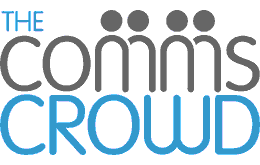Influencer Marketing in B2B – Covering all your bases
Time to read: 2 minutes
Marc Duke explains the science of influencer marketing:
 I am a sports fan, so any sporting metaphor works for me. When I thought about Influencer Marketing this classic baseball reference sums it up and here’s why:
I am a sports fan, so any sporting metaphor works for me. When I thought about Influencer Marketing this classic baseball reference sums it up and here’s why:
Influencer marketing is about making sure the people who influence your target customer know about your offering. The idea of covering all your bases means you have ‘influenced’ all those stakeholders who influence the purchasing decision, and can endorse or advise in favour of your company over the competition. When you communicate directly with your customer or prospect, you are then pushing on an open door as they have already been positively influenced and are already open to dialogue.
Which bases do we cover?
1) Identifying your influencers
So that’s the theory, but who are the people influencing your customers? Much will depend on whether your business sells direct to the customer or through the channel. Either way, the first job is to map out a set of discrete groups that influence the purchasing decision. Let’s take the example of a company that produces environmentally-friendly and energy-efficient office lighting.
Influencers that make the cut will include:
- Journalists – who write about office environments.
- Industry analysts/consultants – who write about the market and provide ‘behind closed doors’ advice to decision makers
- Academics – who teach about ergonomics and design and need to be aware of the latest trends
- Industry associations – who represent the trade and bring together people who work in in the industry
- Industry gurus – who blog, write and speak about the latest trends
- Existing customers – who use the product/service and can endorse its use
- Competition – who’d rather your target customer used their solution!
- Partners – who you work with to your mutual benefit
- Investors – who have invested in your business
- Charities – supporting greener initiatives
I could go on but by now you should have noticed a couple of things. Firstly, this is a long list (one client I worked with identified SIXTEEN separate influencer groups) and secondly, other parts of your marketing activity already address some of these groups e.g. journalists will be handled by PR and industry analysts will be looked after by the Analyst Relations team.
2) Scoring your influencers
For this example let’s just focus our influencer efforts on the industry gurus. How do we identify them and how do we work out the weight of their influence? Not as simple as you might think, and there is a need for some smart metrics that can evaluate the following:
- Reach – how big a following does this guru have on twitter, LinkedIn, Instagram etc? Does this person have blogs or articles in local publications or globally?
- Relevance – how engaged is this influencer socially e.g. how popular is the content that this person has shared?
- Expertise – from their public activity how is this influencer perceived? For example, have you noticed that they are giving keynotes at major industry events?
Each influencer will need a numeric score from 1 – 10 for each category. Ultimately, we will come up with a final influence score. The idea here is that there must be some measure of influence, even if arbitrary, that enables us to track and decide who indeed is an influencer of our target customer base.
3) Engaging your influencers
Assuming we have done our homework, we will probably have anything between 20 to 50 gurus that we have scored and ranked. But how will we work with them? This is where you need to be totally clear that working with an influencer is about education – NOT selling. It’s about informing – NOT persuading and it’s also about recognising that this influencer is rightly lauded because they might have a better understanding of the market than you, they have more experience than you or they just might be really, really smart!
The sorts of questions you need to think about:
- Is there information you can share that they will value and find of interest such as a white paper on an issue they care about?
- Are there things they can actually help with e.g. taking part in a podcast, speaking at one of your events?
- Do you have people in your company credible enough to establish and maintain proper relationships with your halloed influencers rather than just sell at them?
If you have big ticks to all the above then you are ready to go out there and influence those influencers.

